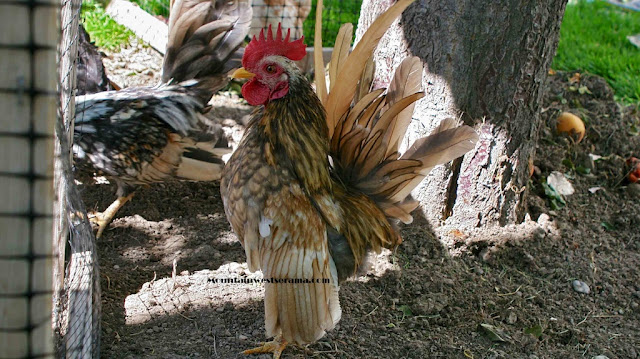Coturnix Quail
A better understanding.
Not a lot of people know that Coturnix quail eggs have orbited around the earth in several Soviet and Russian spacecrafts (Ion 5 Satellite, Salyut 6 and Mir Space Stations). Interestingly enough, in March of 1990, Russian researchers hatched the first eggs in space as well. Their hatch rate was not as successful, but it was possible. Today we know the hatching rate of Coturnix quail are affected by the birds environment, genetics and health.Environment.
The environment of the Coturnix quail has changed since its ancient ancestors. Feeds, weather, breeding filters and predators have shaped quail throughout history. This could result in new breeding & incubating techniques that affect the fertility levels dramatically.Common quail (Coturnix Coturnix) in the wild live in temperate and tropical environments throughout Europe, Egypt, Northern Japan, Asia and China. They consume seeds and insects on the ground. They are reluctant to flying and prefer to save energy by creeping away from danger. The hens lay between 6-12 eggs and nest on the ground.
These little biblical birds earliest domestication started around the 16Th. century by the Japanese. They were kept as singing birds. By the 1900’s, these birds became popular for egg production and meat. The quail are now domesticated for egg laying and meat, these subspecies are known as Japanese quail (Coturnix Japonica).
In the past, the United States Game Department made an attempt to establish one million Japanese quail into the wild in the mid 1950’s. The attempt failed because the quail were too fragile to withstand the American climates. It is now known that common quail and Japanese quail share many common genetics, traits, including; the behavior to hide instead to fly and nest on the ground and others. This is the case in both the wild and domesticated types. The Japanese quail are prolific layers, laying up to 200 eggs during the first year however, it’s wild relative usually only lay up to 18 eggs per season. In conclusion, because of many different species, today quail have a high survival rate and are found all over the world.
Environment stress.
Issue’s can be eliminated if basic health & mental terminology are known. It does not matter if you raise a few quail or thousands, behavioral issues will always be part of a quails genetic footprint. Eliminating possible behavioral issues could balance your quails productivity, mental state and physical state. Healthy eggs come from healthy layers.Breeder requirements.
Paying attention to your flock can teach you new techniques. Stress factors have been reduced with different caging requiring handmade breeding cages. These quail are housed in two Sq. foot cages, grouped in trios or quads. In addition, dust bathes are provided and hideout huts which the hens nest in. These new requirements help achieve a better environment for the bird.Hatch rates & fertility increasing.
Paying attention to the health of the bird will increase egg production and fertility. Document behaviors or changes within the involvement, that will help answer questions you may have. When purchasing quail eggs, look for breeders who understand their birds. As a breeder yourself or other hobbyists, a positive affect within your flock can be managed through the environment, genetics and general health of the birds.Natural plant-based ingredients and nutrients.
It is important for birds to have a balanced nutritious feed. Animal by products will reduce the health of the birds. It is best to use natural feeds that carry vitamin A, Vitamin E, calcium and natural complete and incomplete proteins (amino acid building blocks). This enables a stronger and more disease resistant flock.DNA at Work.
Maintaining healthy genetic bloodlines is important by cross-breeding and controlled line-breeding to increase the genetic information passed on to offspring. Crossbreeding involves controlled crossing of varieties of quail and maintaining correct genetic information. This breeding technique enhances genetic diversity within the bloodlines, increasing fertility levels and decreasing mutation characteristics in offspring. Controlled line breeding is used to express various genetic traits. The use of line-breeding and crossbreeding (when done in a controlled method) will maintain the purest genetic traits while crossbreeding will increase fertility, protein synthesis in egg development and development in general.Hatch rates & fertility increasing.
Paying attention to the health of the bird will increase egg production and fertility. Document behaviors or changes within the involvement, that will help answer questions you may have. When purchasing quail eggs, look for breeders who understand their birds. As a breeder yourself or other hobbyists, a positive affect within your flock can be managed through the environment, genetics and general health of the birds.Different breeds, different traits.
There are a few different types in several varieties of colors. Generally, standard breeds weigh 3 – 6 ounces. The Jumbo variety weighs 10 ounces and or more. All these breeds are bred for different purposes.
Pharaoh quail—
Texas A&M—
English White—
English White is a result from selective breeding of the Texas A&M quail. The breed is smaller in muscle mass weighing 3-6 ounces and resembles color characteristics of the Texas A&M.
Manchurian Golden—
The Manchurian Golden quail was found by Albert F. Marsh in 1960. A natural type-mutation occurred in his flock, where the brown in the Japanese quail changed to a golden color (Homozygous trait, lethal IF). The Manchurian Golden quail is a prolific egg layer, weighing 3-6 ounces (Jumbo Manchurian Golden quail weight 10+ ounces)
Italian—
The Italian quail is the result of selective breeding of Manchurian Golden quail. Breeders have recognized the fading of pattern from the Manchurian quail. The color of this breed has a buff baring body with a head that appears as if dipped in chocolate.
This Italian male is gorgeous, notice his feather patterns, darker head.















Comments
Post a Comment